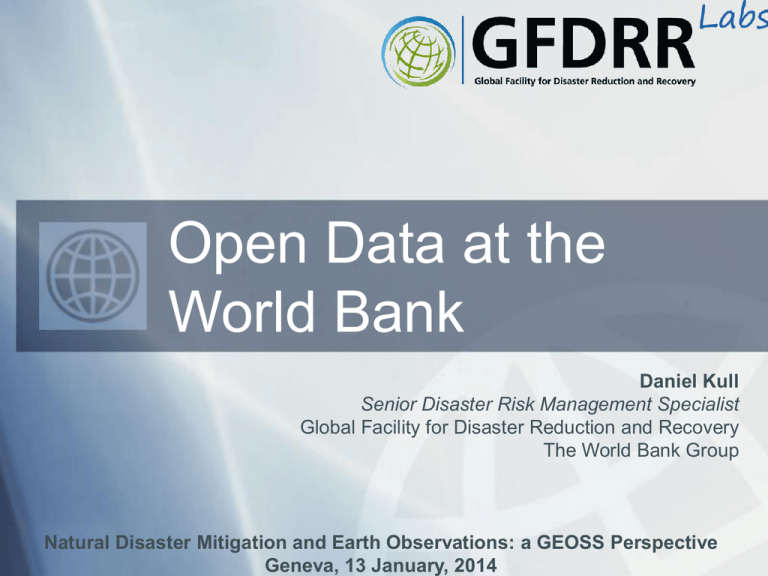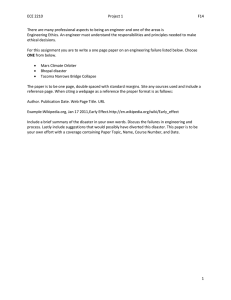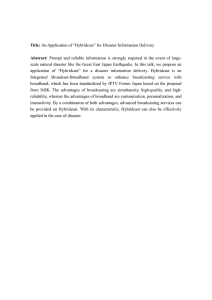Open Data at the World Bank - Group on Earth Observations
advertisement

Open Data at the World Bank Daniel Kull Senior Disaster Risk Management Specialist Global Facility for Disaster Reduction and Recovery The World Bank Group Natural Disaster Mitigation and Earth Observations: a GEOSS Perspective Geneva, 13 January, 2014 Introduction to the World Bank Group • Financial support and technical assistance for developing countries • Bank financing - country implementation - demand driven • Financing for projects, knowledge and data products, global advocacy, technical assistance, advisory services, research, and donor/project coordination 2 World Bank Open Data Initiative • Launched in 2010 to: – “democratize development” – Unlock full value of World Bank data • Global public good for the public good • Costs to provide but benefits far greater: enabling decision-making at all levels, better development, transparency and visibility • 10-fold increase in data use since becoming open • Data is now number 1 reason WBG site visited, accouting for 1/3 of all traffic • Over 1 million visits/month (data site & analytical tools) 3 Open about what we know • Access to over 8,000 development indicators • Over 85 major datasets in the data catalog • A central index and starting place for all data across the Bank • A large survey microdata repository also available Open about what we do • Data on over 11,000 WBfinanced activities with maps of project locations • Even details of procurements, contracts and evaluations • Also published in International Aid Transparency Initiative (IATI) format • Interactive and visualized financial data Supporting open government Kenya Open Budget Data: Raw numbers, hard to understand… Government data, visualized by citizens, easier to understand 6 But we need to help others do Open Data more… • • • • • • Local and geo-coded data Survey data Administrative data Capacity building of statisticians Improved data collection Leveraging of big data sources and techniques 7











